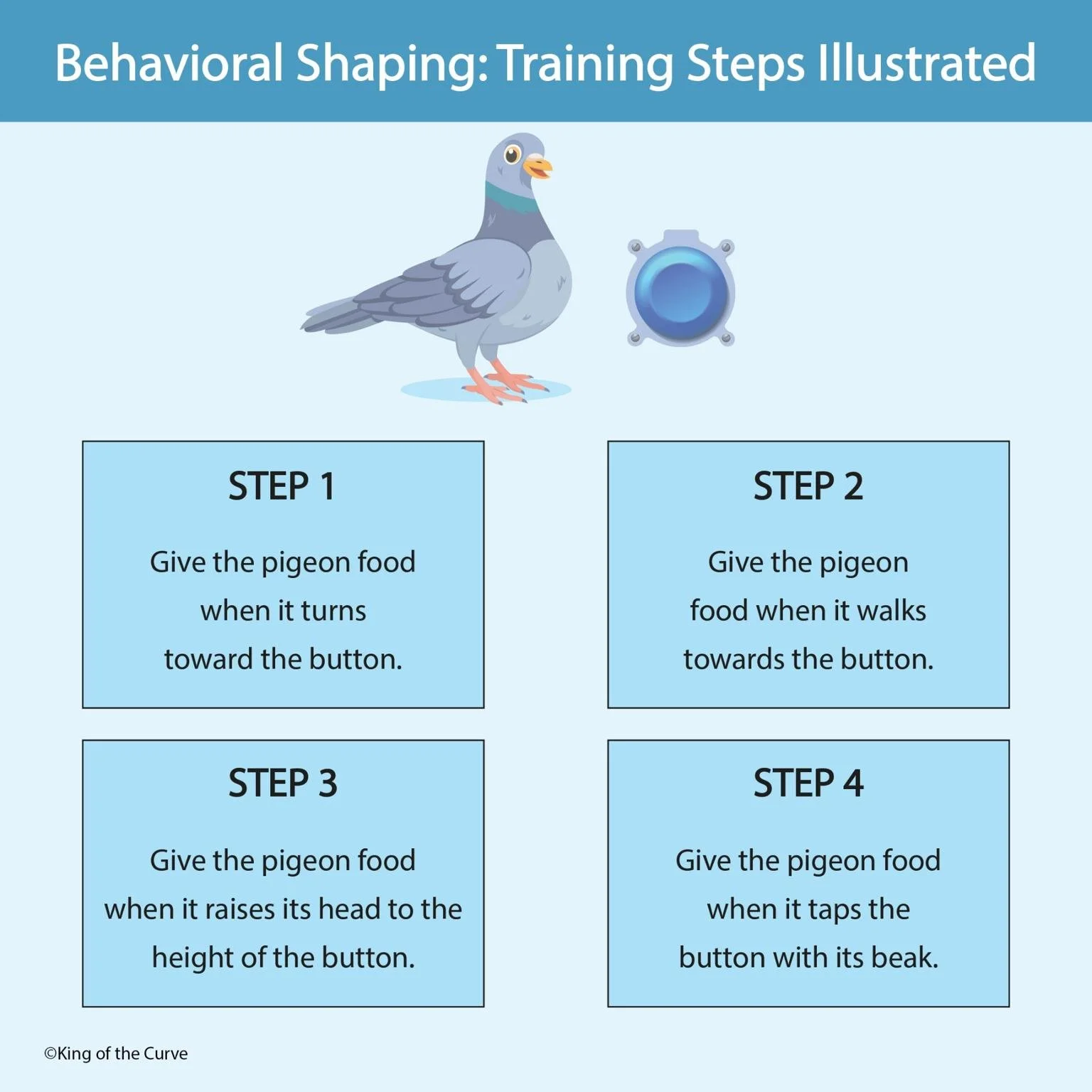🧠 Behavioral Shaping: Training Steps Illustrated
Training animals—or even humans—often involves gradual steps to shape a desired behavior. One of the most powerful tools in behavioral psychology for achieving this is called shaping. This method involves reinforcing successive approximations of a target behavior until the full behavior is achieved. Let’s break it down using a classic example: training a pigeon to press a button.
🐦 What Is Behavioral Shaping?
Behavioral shaping is a concept rooted in operant conditioning, a theory pioneered by B.F. Skinner. It involves reinforcing small steps toward a desired behavior rather than waiting for the behavior to occur in its complete form. Each successful step is rewarded, reinforcing the progression.
🔁 Step-by-Step: Training the Pigeon
✅ STEP 1: Orientation
Give the pigeon food when it turns toward the button.
This first step rewards the bird simply for acknowledging the button’s location. By reinforcing this basic behavior, you lay the groundwork for more complex actions.
✅ STEP 2: Approach
Give the pigeon food when it walks towards the button.
Once orientation is established, you increase the criteria: now the pigeon must physically approach the button. The previous step is no longer rewarded—only this new behavior is.
✅ STEP 3: Alignment
Give the pigeon food when it raises its head to the height of the button.
The goal is to get the pigeon to interact with the button. This step rewards a more precise physical posture, moving closer to the final behavior.
✅ STEP 4: Action
Give the pigeon food when it taps the button with its beak.
Finally, the desired behavior is achieved. The pigeon taps the button. This is now the only action that receives reinforcement.
🎯 Why Is Shaping Effective?
Builds confidence: The subject experiences success with each step.
Increases motivation: Continuous rewards help maintain enthusiasm.
Reduces frustration: Small, manageable changes are easier to accomplish than expecting the final behavior immediately.
📚 Applications Beyond Pigeons
Behavioral shaping is not limited to lab animals. It’s used in:
Pet training (e.g., teaching dogs to fetch)
Rehabilitation therapy (e.g., motor skill recovery)
Education (e.g., scaffolding concepts in learning)
Behavioral therapy (e.g., guiding clients toward healthier behaviors)
🧩 Final Thoughts
The power of shaping lies in its simplicity and effectiveness. By reinforcing each small milestone, trainers can lead subjects—animal or human—to complex behaviors that once seemed unreachable.
Frequently Asked Questions (FAQs)
-
Aim for 4-6 focused hours, ensuring you incorporate breaks to avoid burnout.
-
Practice mindfulness techniques, take practice exams under realistic conditions, and maintain a balanced lifestyle.
-
Set short-term goals, seek support from mentors, and reward yourself for small achievements.
-
Regular exercise improves focus, reduces stress, and enhances overall mental clarity.
-
KOTC offers personalized learning tools, gamification features, and adaptive question banks to help students stay on track without burnout.


